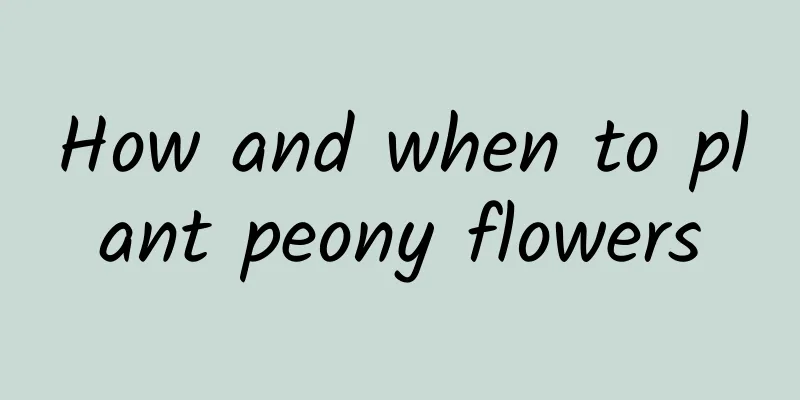These 6 kinds of flowers are the most "addictive", growing one will make you healthier!

JasmineMain function: Kill harmful bacteria such as diphtheria, relieve symptoms of dizziness and nasal congestionThe fragrance of jasmine is very strong. Putting a pot of it indoors can not only remove odors from the air and make the room fragrant, but most importantly, it can inhibit the growth and reproduction of some harmful bacteria such as Mycobacterium tuberculosis and alleviate the symptoms of cold and nasal congestion. It is simply killing two birds with one stone! Maintenance points:1. After autumn, jasmine continues to grow and bloom. It must be placed on a south balcony with sufficient light to make its flowers more fragrant and the sterilization effect will be better! 2. In autumn, the amount of watering should be gradually reduced compared to summer. Water once every 3-5 days, and spray water on the leaves in the morning and evening to increase the air humidity. 3. To promote more flowering of jasmine, spray 0.2% potassium dihydrogen phosphate solution once every 7-10 days. Osmanthus fragransMain function: The fluff on the flowers can intercept particles and smoke floating in the airHuahua thinks that autumn is the best time to grow a pot of osmanthus. There are a lot of hairs on osmanthus, which can absorb all the floating smoke and small particles in the air, making the air in the room cleaner. Maintenance points:1. Autumn is the time when osmanthus flowers bloom. Apply fish intestine fertilizer, bone meal fertilizer, etc. about once every 7-10 days. Before flowering, spray 0.2% potassium dihydrogen phosphate solution several times to make the osmanthus flowers sprout more and bloom more. 2. Osmanthus must be placed in a well-ventilated place indoors to better absorb dust. If there is too much smoke and dust in the room, or it is always stuffy, it will cause the osmanthus to grow poorly or even have leaves fall off. 3. Osmanthus also likes acidic soil. It can be watered with 0.2% ferrous sulfate solution about once every half a month to prevent the leaves of the osmanthus from turning yellow. MonsteraMain function: absorb formaldehyde and sulfur dioxideMost flowers breathe at night, and will consume oxygen if placed indoors, but Monstera is different. It absorbs carbon dioxide all the time, both day and night, and is even better than an air purifier! Maintenance points:1. Monstera is a particularly shade-tolerant flower and must not be exposed to direct sunlight, otherwise the leaves will be burned, causing them to lose their luster and affecting the absorption of harmful substances. 2. Make sure the soil in the Monstera pot is slightly moist. Wash the leaves with clean water every once in a while to remove the dust and other substances adsorbed on the leaves. 3. Monstera likes fertilizer, so apply decomposed liquid fertilizer about once a month. When applying fertilizer, be sure not to get it on the leaves, otherwise it will affect its ability to absorb harmful substances. White AnthuriumMain function: remove formaldehyde, ammonia, acetone, benzeneAnthurium is a famous waste gas filter. It can absorb all the waste gases exhaled by the human body, especially ammonia and acetone. Especially the hydroponic Anthurium can absorb alcohol, benzene, ozone and other substances. If placed in the kitchen, it can also absorb oil smoke and some volatile substances. Maintenance points:1. Anthurium prefers partial shade and can be placed in a place with sufficient scattered light. If it is exposed to direct sunlight, it will easily cause the leaves to burn and fade. 2. If the white calla lily lacks water, its leaves will droop, so it needs to be watered once every 3-5 days. Normally, you should also spray water on the leaves in the morning and evening to ensure a high air humidity. 3. Many flower lovers usually grow anthuriums in water. You can add some nutrient solution into the hydroponic bottle on a regular basis, which will make the leaves of the anthurium glossy and grow more vigorously, and its ability to absorb harmful substances will also become higher and higher. Miniature CoconutMain function: purify benzene, trichloroethylene and formaldehydeThe pocket coconut is a small slide that can add highlights to the interior whether placed on a desk or a coffee table. The miniature coconut palm has a very strong ability to absorb harmful substances, whether it is formaldehyde, benzene, trichloroethylene, or increasing indoor air humidity, the effect is very good! Maintenance points:1. The miniature coconut palm prefers partial shade. If it is exposed to strong light, its leaves will turn yellow, so it is best to place it in a bright place such as near a window indoors. 2. The miniature coconut palm is particularly fond of water. If the air humidity is not enough, the leaves will turn brown. So in addition to normal watering, you must spray water on the leaves frequently in the dry autumn. 3. Apply compound fertilizer once a month. You can dissolve about 3-5 grains of compound fertilizer in water and add it when watering. ScheffleraMain function: absorb nicotine and reduce formaldehyde concentrationSchefflera can mainly absorb secondhand smoke and convert harmful substances such as nicotine into substances it needs. Moreover, Schefflera can reduce the formaldehyde concentration in the room by 9 mg per hour. Putting a pot of it at home is the most appropriate! Maintenance points:1. If Schefflera arborvitae is not properly maintained, it is particularly prone to leaf loss, especially when the light is too strong or too weak, which will always cause leaves to fall, so it is best to place it in the living room with sufficient diffuse light. 2. During the growing season, you can apply decomposed liquid fertilizer 1-2 times every 2-3 weeks to make Schefflera grow more vigorously! 3. Schefflera is particularly prone to growing leggy branches, so the plant should be pruned regularly to trim off all the leggy branches, crossed branches, old branches, etc. to ensure a beautiful plant shape. |
<<: Flower language of Cineraria
>>: Is African violet poisonous?
Recommend
Can bananas also grow flowers? Too many uses
Banana peels can be used as flower fertilizer Ban...
How to grow the moonflower so that it will bloom out of the pot?
As the hybrid offspring of the moon, the moon is ...
Can the crape myrtle tree be transplanted in autumn? When is the best time to transplant it?
Can the crape myrtle tree be transplanted in autu...
There are several varieties of elm trees. Which one is more precious?
1. There are several varieties There are many var...
When is the best time to plant cherry seeds?
Cherry seed planting time Cherry is a perennial p...
What to do if Daphne odora doesn't bloom
Why isn't it blooming? The flowering period o...
Why is the crabapple flower considered unlucky?
1. Superstitious beliefs Some people say that cra...
How to prune the roots of orchids
Do orchids need root pruning? The roots of orchid...
Pineapple's growing environment and local conditions
Pineapple Growth Environment and Conditions Pinea...
How to care for newly bought osmanthus
1. How to deal with newly bought osmanthus When y...
What medicinal herbs are good to plant on barren hills? What medicinal herbs are valuable to plant on barren hills?
Wasteland has a special climate and a difficult e...
Cultivation methods and precautions of Marian Dieffenbachia
Marian Dieffenbachia is a variety of Dieffenbachi...
The meaning of chrysanthemum, what does chrysanthemum represent
1. Meaning 1. Retreat from the world: Chrysanthem...
When is the best time to repot bougainvillea? How to care for it after repotting?
1. Suitable time for repotting You should choose ...
Is it good to keep Impatiens at home? Why can't I keep it alive?
1. Is it good to keep Impatiens at home? Impatien...









